
APPLIED IMMUNOHISTOCHEMISTRY & MOLECULAR MORPHOLOGY
Scope & Guideline
Advancing knowledge in histology and pathology.
Introduction
Aims and Scopes
- Immunohistochemical Techniques:
The journal emphasizes the development and application of immunohistochemical methods for the diagnosis of various tumors, exploring new markers and techniques that improve diagnostic precision. - Molecular Morphology:
It investigates the relationship between molecular changes and histopathological features, aiding in understanding tumor biology and behavior. - Diagnostic and Prognostic Biomarkers:
The journal concentrates on identifying and validating biomarkers that can predict disease outcomes, therapeutic responses, and aid in the stratification of patients for personalized treatment. - Case Studies and Clinical Applications:
Through detailed case reports and studies, the journal provides practical insights into the real-world application of immunohistochemistry and molecular techniques in pathology. - Emerging Technologies:
The journal explores innovative methodologies, such as digital pathology and machine learning applications in immunohistochemistry, enhancing the field's capability for analysis and diagnosis.
Trending and Emerging
- Immune Checkpoint Analysis:
There is a growing focus on the role of immune checkpoint proteins, such as PD-L1, in cancer diagnosis and treatment, particularly in the context of immunotherapy, demonstrating the relevance of immunological factors in tumor management. - Multiplex Immunohistochemistry:
The use of multiplex techniques is gaining traction, allowing for the simultaneous detection of multiple markers, which enhances diagnostic capabilities and provides a more comprehensive understanding of tumor microenvironments. - Integration of Digital Pathology:
The incorporation of digital imaging and quantitative analysis in immunohistochemistry is emerging as a trend, facilitating more precise evaluations and standardizing assessments across laboratories. - Molecular Profiling and Genomic Studies:
Research that combines immunohistochemistry with genomic and molecular profiling is increasing, reflecting a trend towards personalized medicine and targeted therapies for cancer treatment. - Prognostic and Predictive Biomarkers:
There is an expanding emphasis on identifying biomarkers that not only predict outcomes but also guide therapeutic decisions, aligning with the shift towards personalized oncology.
Declining or Waning
- Traditional Histopathology Techniques:
There is a noticeable reduction in studies solely focused on conventional histopathological techniques without the integration of immunohistochemistry or molecular analysis, indicating a shift towards more advanced diagnostic methods. - Single Marker Studies:
Research concentrating on single immunohistochemical markers has become less frequent, as the field moves towards multi-marker panels and more comprehensive approaches to diagnosis. - General Cancer Characterization:
Publications that broadly characterize cancers without specific immunohistochemical or molecular insights have diminished, reflecting a trend towards more targeted and detailed investigations.
Similar Journals

Diagnostic Pathology
Championing Excellence in Pathology and Histology StudiesDiagnostic Pathology is a prominent open-access journal published by BMC, dedicated to advancing the field of pathology by providing a platform for high-quality research findings since its inception in 2006. Based in the United Kingdom, the journal covers a broad spectrum of topics within the realms of histology, pathology, and forensic medicine, facilitating discussions that are crucial for both clinical and laboratory settings. With an impressive impact factor that places it in the Q2 category across multiple categories including Histology and Miscellaneous Medicine, it ranks favorably in Scopus with notable positions in the 71st and 55th percentiles for Pathology and Histology respectively. As a valuable resource for researchers, professionals, and students alike, Diagnostic Pathology promotes the dissemination of cutting-edge studies and findings, thereby contributing significantly to the evolving landscape of medical science. The journal’s commitment to open access enhances its accessibility, ensuring that valuable research is freely available to a global audience.
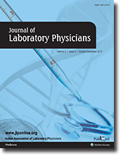
Journal of Laboratory Physicians
Unlocking the potential of laboratory science for better healthcare.The Journal of Laboratory Physicians is a prestigious, peer-reviewed publication dedicated to advancing the field of laboratory medicine. Published by THIEME MEDICAL PUBL INC, this journal has established itself as a vital source of research and clinical insights since its inception, transitioning to Open Access in 2009 to broaden its reach and accessibility. With an ISSN of 0974-2727 and an E-ISSN of 0974-7826, it aims to provide a platform for professionals, researchers, and students engaged in laboratory-based studies to share critical findings and foster collaboration across disciplines. The journal's scope encompasses a wide range of topics relevant to laboratory physicians, ensuring that it remains an essential resource for those seeking to stay on the cutting edge of laboratory practices and innovations. By disseminating timely research and reviews, the Journal of Laboratory Physicians plays a crucial role in enhancing the quality of healthcare through improved laboratory services.

Turkish Journal of Pathology
Innovative Insights for the Global Pathology CommunityTurkish Journal of Pathology, published by the Federation Turkish Pathology Society, stands as a vital platform for disseminating high-quality research in the field of pathology and forensic medicine. With an ISSN of 1018-5615 and an E-ISSN of 1309-5730, this journal has been an open-access publication since 2013, ensuring that cutting-edge findings are readily available to the global community. Based in Turkey, it aims to contribute significantly to the advancement of pathology as it converges from 2010 to 2024, currently holding a Q3 quartile ranking in its category according to 2023 metrics. As it ranks #129 out of 208 in the Scopus database for Medicine, Pathology, and Forensic Medicine, it offers researchers, professionals, and students invaluable insights and innovative studies that address critical developments in the field. The Turkish Journal of Pathology fosters collaboration and knowledge-sharing, making it an essential resource for anyone involved in pathology research and practice.
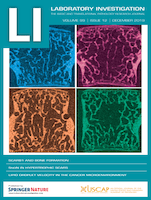
LABORATORY INVESTIGATION
Transforming Laboratory Findings into Clinical SolutionsLaboratory Investigation is a premier academic journal published by Elsevier Science Inc, specializing in the fields of Pathology, Forensic Medicine, Cell Biology, and Molecular Biology. With its ISSN 0023-6837 and E-ISSN 1530-0307, this journal has been a significant contributor to scientific discourse since its inception in 1952, converging into its current form by 2024. It holds an impressive standing in its respective fields, featuring a 2023 Journal Rank of Q2 in both Cell Biology and Molecular Biology, and an elite Q1 ranking in Pathology and Forensic Medicine, reflecting its influence and quality of research, as seen in its Scopus ranks—17th out of 208 in Pathology and Forensic Medicine. Although it does not offer Open Access options, the journal remains a vital resource for researchers, professionals, and students who seek to disseminate and engage with high-caliber research findings. The importance of Laboratory Investigation is underscored by its commitment to advancing the understanding of laboratory and translational medicine, paving the way for innovations that enhance clinical practices.
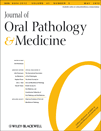
JOURNAL OF ORAL PATHOLOGY & MEDICINE
Fostering Collaboration in Oral Disease ResearchWelcome to the JOURNAL OF ORAL PATHOLOGY & MEDICINE, a distinguished publication dedicated to advancing knowledge within the realms of oral pathology and medicine. Published by WILEY since 1972, this journal has established itself as a critical resource for researchers and practitioners alike, covering a broad spectrum of topics related to oral health and disease. With an impressive array of rankings, including Q1 status in categories such as Oral Surgery and Periodontics, and a prominent position in Otorhinolaryngology, the journal is recognized for its substantial contributions to these fields. Although currently not open access, it remains pivotal in disseminating vital research findings, fostering collaboration and innovation among healthcare professionals. The interdisciplinary scope of the journal also supports its high impact factor and robust Scopus rankings, including a 92nd percentile in Otorhinolaryngology. By providing a platform for original research and reviews, the JOURNAL OF ORAL PATHOLOGY & MEDICINE plays an essential role in shaping future advancements in oral health sciences.
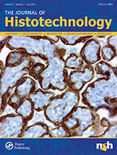
JOURNAL OF HISTOTECHNOLOGY
Advancing histotechnology for a healthier tomorrow.JOURNAL OF HISTOTECHNOLOGY, published by Taylor & Francis Ltd, is a leading academic journal dedicated to advancing the field of histotechnology, which plays a crucial role in both clinical and research settings. With an established history since 1977, this journal serves as a critical platform for researchers, professionals, and students engaged in the intricate study of tissue processing, staining techniques, and microscopic analysis. It is currently indexed in reputable databases, reflecting its commitment to scientific rigor, with a notable presence in categories such as Anatomy, Histology, and Medical Laboratory Technology. Despite its open access status being limited, the Journal of Histotechnology maintains a respectable impact factor and ranks within the third quartile for Anatomy and Medical Laboratory Technology, and fourth quartile for Histology in 2023, emphasizing its relevance in the scholarly community. As the field continues to evolve, this journal aims to foster innovation and dissemination of knowledge within histotechnology, making it an essential resource for those looking to further their expertise and contribute to the advancements in this vital area of health sciences.
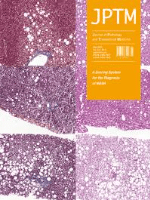
Journal of Pathology and Translational Medicine
Empowering the Future of Pathology Through ResearchThe Journal of Pathology and Translational Medicine, published by the Korean Society of Pathologists, is a distinguished peer-reviewed Open Access journal that has been at the forefront of advancing the field of pathology and histology since its inception in 1985. With an established ISSN of 2383-7837 and an E-ISSN of 2383-7845, the journal serves as a vital platform for disseminating high-quality research, fostering collaboration among professionals and offering valuable insights into both clinical applications and theoretical advancements. Recognized for its influence in the field, it holds a commendable Q2 ranking in both Histology and Pathology & Forensic Medicine categories in 2023, and ranks #52/208 in Scopus for Medicine – Pathology and Forensic Medicine, demonstrating its impact and reach within the academic community. Located in South Korea at 1209 Gwanghwamun Officia, 92 Saemunan-ro, Jongno-gu, Seoul 03186, this journal not only caters to researchers and professionals but also supports students striving to deepen their understanding of pathology. Join the growing body of knowledge and stay updated with the latest findings in this essential field of study through the journal's open access format, promoting worldwide accessibility and engagement.
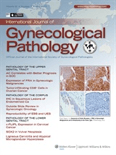
INTERNATIONAL JOURNAL OF GYNECOLOGICAL PATHOLOGY
Fostering innovation in reproductive health research.INTERNATIONAL JOURNAL OF GYNECOLOGICAL PATHOLOGY, published by Lippincott Williams & Wilkins, is a premier academic journal dedicated to the intricate field of gynecological pathology, serving a critical role in advancing the understanding of diseases related to women's reproductive health. Since its inception in 1982, this journal has established itself as a key resource for researchers, clinicians, and students, with a current impact factor that reflects its esteemed reputation; it is ranked in the Q2 category for both Obstetrics and Gynecology, as well as Pathology and Forensic Medicine, signifying its prominence in academic circles. The journal's scope encompasses a wide array of topics, including histopathological findings, diagnostic methodologies, and evolving therapeutic strategies, all pivotal to enhancing patient care. With a steadfast commitment to disseminating high-quality research until the projected year of 2024, the INTERNATIONAL JOURNAL OF GYNECOLOGICAL PATHOLOGY is an essential read for those looking to stay abreast of the latest developments in this vital area of medical science.
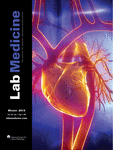
AMERICAN JOURNAL OF CLINICAL PATHOLOGY
Elevating Standards in Clinical Pathology ResearchThe American Journal of Clinical Pathology, published by Oxford University Press Inc, stands as a vital resource in the fields of pathology and clinical medicine. With a rich history dating back to 1945 and an impressive impact factor reflected in its Q1 ranking in Pathology and Forensic Medicine, this journal serves as a cornerstone for researchers and professionals seeking to advance their knowledge and practice. Covering a breadth of topics within the discipline, it is recognized in 2023 as ranked #24 out of 208 in its category, highlighting its esteemed reputation within the scientific community. Although the journal does not currently offer open access, its rigorous peer-reviewed articles and cutting-edge research make it an essential addition to any academic or clinical library. The ISSN for print version is 0002-9173, with an E-ISSN of 1943-7722 available for digital access. Researchers, students, and practitioners alike will benefit from its comprehensive scope and commitment to disseminating high-quality scientific inquiry.

Journal of Hematopathology
Connecting clinicians and researchers for better diagnostics.The Journal of Hematopathology, published by SPRINGER HEIDELBERG, serves as a vital resource in the fields of hematology, histology, and pathology. Established in 2008, this peer-reviewed journal aims to foster the exchange of knowledge among researchers, clinicians, and students by publishing original articles, reviews, and case studies that contribute to the understanding of hematopathological disorders. While the journal currently ranks in the fourth quartile in various categories including hematology and histology, it positions itself as a platform for emergent research and insights, addressing the evolving landscape of blood-related diseases. Although not an open access journal, it provides crucial access to research findings for professionals looking to stay abreast of developments in pathologic diagnostics and therapeutic strategies. As it continues to grow, the journal remains committed to enhancing the knowledge base and scientific discourse in hematopathology.